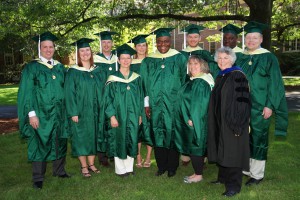 I have written in the past about Science, Technology, Engineering, and Math (STEM) education for young people. I am a big advocate of STEM learning and participate in events when possible. I think it is important for everyone to be grounded in the sciences and math to be able to work in our increasingly complex world. It is nice to know how to use an app or a particular software but it is even better to know how it works, especially when it mysteriously fails and you need to try to fix it.
I have written in the past about Science, Technology, Engineering, and Math (STEM) education for young people. I am a big advocate of STEM learning and participate in events when possible. I think it is important for everyone to be grounded in the sciences and math to be able to work in our increasingly complex world. It is nice to know how to use an app or a particular software but it is even better to know how it works, especially when it mysteriously fails and you need to try to fix it.
Lately, I have been seeing the term STEAM, which stands for Science, Technology, Engineering, Arts, and Math. In other words, arts inserted into STEM. To be honest, I was skeptical when I first started seeing this term because it felt like the arts were jumping on a bandwagon they were not supposed to be part of. In this post I will explore the origins of STEM and how we got from STEM to STEAM and the value of adding arts education.
Origins of STEM
The Russian satellite Sputnik launch in 1957 started a rivalry with America for technical superiority on earth and in space. America thought that it should be first in terms of smart scientists and mathematicians. The U.S. developed plans to place a man on the moon and in July, 1969, realized that vision and regained superiority in the space race. Growing up in the 1960s, we all wanted to be astronauts and we studied the necessary disciplines to get us into space. Science and math were fundamental. Computer development in the ‘80s and ‘90s kept technical subjects in the forefront. Programming, math, and electronics were important and exciting.
The National Science Foundation coined the term STEM in 2001 to refer to a renewed emphasis in teaching technical disciplines. Surveys showed that American education was slipping compared to other countries and we were losing that superiority we fought so hard to gain in the 1960s. STEM renewed the emphasis on science education in order to stay on top.
STEM to STEAM
The Rhode Island School of Design championed the term STEAM in an attempt to include art and design with the traditional STEM subjects. They are working to promote this transition with educational institutions around the country. A recent article in the Tech Edvocate did a good job of advocating for this move. Traditional STEM subjects are analytical or left-brained by nature whereas art and design and creativity and spatial awareness all come from the right hemisphere of the brain. In order to create a holistic or whole brained approach to teaching STEM subjects, we need to call on our powers of analysis and visualization. This makes sense to me. A recent conversation with school-age youth brought up the same points. Instead of arts trying to tag along with STEM, this is a way to actively incorporate other methods of learning into technical subjects.
Thoughts
If we are deliberate and thoughtful about adding art, design, and visualization exercises into traditional STEM curriculum, then I think it can be a plus for the student. It will help them navigate both hemispheres of the brain in order to turn out a more creative product. What are your thoughts? Is STEAM a good idea or will it detract from the STEM emphasis.
Kelly Brown is an IT professional and assistant professor of practice for the UO Applied Information Management Master’s Degree Program. He writes about IT and business topics that keep him up at night.






